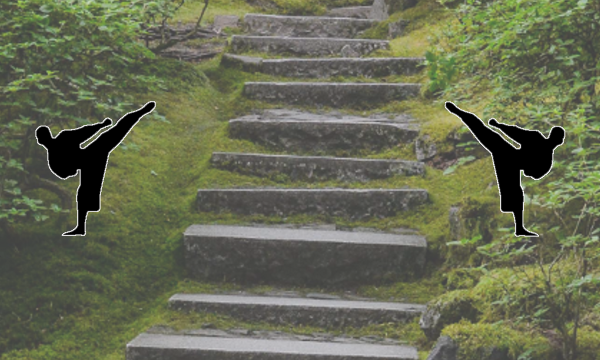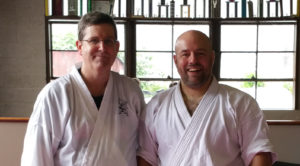
“In battle, do not think that you have to win. Think rather that you do not have to lose.” Gichin Funakoshi Founder of Shotokan Karate
Articles

Martial Artists Against Bullying
Unfortunately, bullies seem to be everywhere. As martial arts instructors, helping children deal effectively with bullies seems like a no-brainer, but it’s important that we begin with a solid foundation. This is a free program that provides the foundation that any martial arts instructor can use to plan their own seminars to help kids deal with bullying.
Even if you’re an expert, its worth a glance.
- Session I – What is bullying? Why do people do it? Why is it bad to bully others?
- Session II – What should we/shouldn’t we do when we see others being bullied?
- Session III – How should you deal with bullying?
- Session IV – Buddying
10 Requirements for Teaching a Self-defense “Move”
Here are some things to consider when you are figuring out what drills to do during your next self-defense session. There is no “one move” that will work in every situation, but there are lots of moves that won’t work in any. These question will help to get the most out of the moves you practice.
- Is the Move significantly better than an instinctive response?
- Is the Move appropriate for the situation?
- Does the Move meet the standard for legal self-defense?
- Does the Move meet the criteria of attempting to create the results of the Rory Miller’s Golden Move? (Damage the attacker. Minimize the student from taking damage. Put the attacker in a worse position. Put the student in a better position)
- Is the Move consistent with the student’s goal of creating one of the following results given the student’s risk/occupation profile?
(Escape for your student. Control of the attacker by your student. Disabling the attacker by your student.) - Is the student capable of executing the Move in an actual conflict?
- Does the student have the prior training and experience to be able to execute the Move under stress?
- Is the student able to train this Move to become proficient?
- Will the Move NOT put the student in a worse position if the Move fails to work as intended?
- Is the Move consistent with increasing the student’s understanding of the context of his or her actual risk profile?
7 Tricks to Finally Nail the Whole Portion Control Thing
This is my struggle these days. When I was young I could eat anything and get away with it, but now I need to be more selective. A good workout and picking the right foods helps a lot, but it will only go so far if you aren’t also limiting the intake.
- Always aim for a 50/25/25 plate – 50% vegetables, 25% lean protein and 25% starch/carbs
- Eat off smaller plates – This will help to trick your mind, and it’s a good tool for those of us who always seem to be going back for seconds.
- Set aside leftovers before your meal – This can help with the “well, there isn’t enough to save, so I might as well finish it” mentality. (One I suffer from when chocolate cream pie is involved.)
- Go halvsies at restaurants – The portion sizes at restaurants are often way to big. You don’t have to split the meal with your partner. Take half of it home for later.
- Stop eating straight from the bag – Dump the chips into a bowl when you are snacking if you want to know how much you are eating and to prevent yourself from accidentally finding an empty bag in your hands.
- Survey the scene at the buffet – Do the walk and plan your meal before loading up your plate.
- Separate meal time from TV time – Focus on the meal so that your mind is fully aware that you ate something.
Videos
![]()
How to Practice Effectively
This video from TED Ed looks at what it means to practice, and how we can do it better. It’s not just about the hours we practice, but the quality and effectiveness that goes into that practice. Practice needs to be consistent, it needs to be focused, and it needs to target our current weaknesses or current limits.
For example, if I can do twenty-five pushups with ease, then only practicing ten probably isn’t going to do that much for me. Also, when working on technique, try to find an area for that technique that you can improve. Can your kick be faster or more powerful? Does your chamber or balance need work?
Don’t just practice what you are good at. Work on improving each time that you practice.
When you practice, stay focused. If you are watching TV while practicing your kata, you aren’t going to see much improvement on the kata, and you probably won’t remember what you watched on TV either.
Start out slowly to get the form correct. Practice is about repetition, and you want to repeat the right thing, so begin slowly (or in slow-motion) to make sure you are doing it correctly, then pick up speed as you become more comfortable.
Take breaks. Frequent repetition is good, but your body and mind needs to take breaks. Instead of going for one mega-long workout, try doing three smaller ones spread throughout the day.
And once you get proficient, visualize what you are practicing. Imagine yourself doing it as vividly as you can in your head. This last tip is great for right before testing or competition. It helps to reinforce what you have been practicing physically.
Books

 Karate-Do: My Way of Life by Gichin Funakoshi
Karate-Do: My Way of Life by Gichin Funakoshi
Whenever I need a little inspiration for my own, personal martial arts journey, this is one of my go to books. Considered by many to be the father of modern day karate, this book provides an excellent insight into the early days of karate.






 This came up in discussion the other day. Pennsylvania has a
This came up in discussion the other day. Pennsylvania has a 
